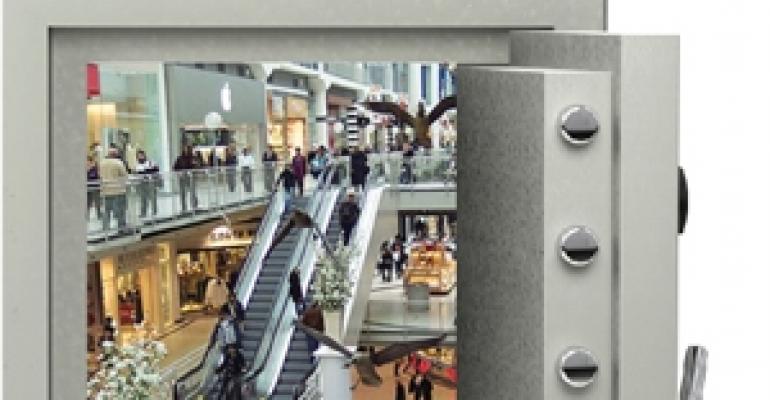After several years of turning a skeptical eye on retail properties, risk-wary institutional investors are beginning to favor retail assets more and more. Reassured by improving sector fundamentals and hungry for healthy yields, pension funds, private equity firms, life companies and foreign buyers all seem ready to place more capital into shopping centers and malls in 2013.

Kohlberg Kravis Roberts’ (KKR) recent acquisition of a Kansas City outlet center, which is among the first few real estate investments the private equity giant has completed, is only one example of the trend.
On the private equity side, there is also Blackstone Group’s recent entry into two joint ventures with Kimco Realty Corp., encompassing 40 shopping centers. The deal has been valued at $1.1 billion.
When it comes to pension funds, in the past few months, California Public Employees’ Retirement System (CalPERS) bought a shopping center in Schaumburg, Ill. in a joint venture with Miller Capital Advisory for more than $1 billion; Teachers Insurance and Annuity Association—College Retirement Equities Fund (TIAA-CREF) invested $90 million in a retail building on Chicago’s Michigan Avenue and $39 million in a town center in Valencia, Calif.; and Prudential Real Estate Investors picked up a strip center in Reading, Pa. for $18 million in a joint venture with Vastgood Properties.
The Association of Foreign Investors in Real Estate (AFIRE) reports that retail has moved to number 3 spot among foreign investors’ preferred asset classes, from the number 4 spot last year. It currently ranks behind multifamily and industrial properties, but above office buildings and hotels.
“Foreign buyers will continue to view U.S. real estate, including retail, as a comparatively safe place to invest money, although they will likely focus on top properties in the biggest , most liquid markets,” says Susan Persin, of Trepp LLC, a provider of commercial real estate information.
Persin adds that “private equity funds, which typically have a higher appetite for risk than life insurers or pension funds, will be attracted to the potential returns in retail, especially since interest rates are expected to stay very low, limiting their options for high returns elsewhere.”
She estimates that retail investments would deliver returns between 5 percent and 10 percent in today’s market.
Hard facts
According to Real Capital Analytics’ (RCA) Commercial Property Price Indices (CPPI), retail assets lost 30 percent of their value from the peak of the market in April 2007 through the end of 2012. They have regained only 1 percent of their value last year.
In contrast, RCA’s CPPI for multifamily, which has been the preferred asset class for institutional investors in 2011/2012, shows that multifamily properties lost only 7 percent of their value from the peak of the market through the end of last year, and have posted a 12 percent increase in value in 2012 alone.
The 2012 National Council of Real Estate Investment Fiduciaries’ (NCREIF) Property Index (NPI), which measures the total rate of return for properties acquired in the private market solely for investment purposes, shows that retail assets provided a return of 11.6 percent for the full year 2012, higher than any other commercial property class. Retail centers even overtook apartment buildings in return performance last year, as the latter delivered a return of 11.2 percent.
The return calculations were based on 1,113 retail properties with a market value of approximately $73 billion.
NCREIF and ICSC also report that in the fourth quarter of 2012, shopping center NOI in the U.S. rose 4.3 percent on a per sq. ft. basis from the year prior. Breaking down the retail sector by property type, power center NOI showed the greatest increase, at 7.7 percent, followed by superregional malls, at 4.6 percent, neighborhood and community shopping centers, at 3.8 percent, and regional malls, at 0.4 percent.
RBC Capital Markets described mall and community center REITs as outperformers in the fourth quarter of 2012, along with apartment and industrial REITs. Using a scale where a score of 1.0 denotes a miss of analyst estimates, 2.0 is equal to meeting analyst estimates and 3.0 is equal to beating analyst estimates, RBC analyst Rich Moore ranks mall REITs at 3.0 and community center REITs at 2.5.
For comparison, apartment REITs earned a score of 2.6, industrial REITs a score of 2.5 and office REITs a score of 2.1.
In his February 11 report, Moore notes that “2013 guidance has been particularly encouraging on both retail fronts—community centers and regional malls.”
According to research done by Trepp, New York/Northern New Jersey, Washington, D.C., Miami, Los Angeles and San Francisco currently promise the best profits on retail real estate investments, based on net cash flow (NCF).

